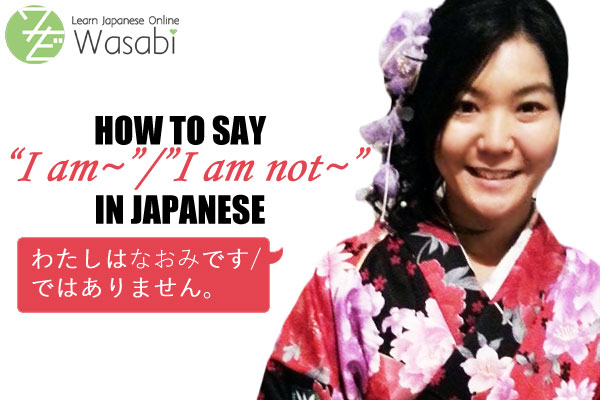How to say “I am~”/”I am not~” in Japanese
みなさんこんばんは。
Hello everyone! In this live-stream, Wasabi tutor Naomi explained in simple Japanese and English how to say “I am~” and “I am not~” in Japanese:
わたしは~です。
I am ~.
わたしは~ではありません。
I am not ~.
“です” is the formal version of to be. For complete beginners, we recommend learning the formal version first.
Let’s see some examples:
わたしはなおみです。
I am Naomi.
わたしは日本人です。
I am Japanese.
As you see, you put whatever noun you want to use between “わたしは” and “です”.
Here is another example:
わたしは京都出身です。
I am from Kyoto.
[adsense]
(Please note “京都出身” is a noun, and can literally be translated as “originating from Kyoto” – “I am from Kyoto” is simply the more elegant translation.)
Next, let’s take a look at the negative form “わたしは~ではありません”.
わたしは日本人ではありません。
I am not Japanese.
わたしはなおみではありません。
I am not Naomi.
The noun is placed between “わたしは” and “ではありません”.
Now, if you want to ask somebody else if they are something, you can simply replace “わたし” (I) for “あなた” (You), and then add “か” at the end of the sentence. “か” is the general question particle in Japanese.
あなたは日本人ですか?
Are you Japanese?
In Japanese “あなた” is not commonly used, so you can also omit. Alternatively, you can put the name of the person you are addressing plus “さん”, which is a polite suffix attached to people’s names.
日本人ですか?
Are you Japanese?
なおみさんは日本人ですか?
Ms. Naomi, are you Japanese?
That’s it for today. If you have any questions, you can always clear them up by booking a lesson with one of our native Japanese tutors. See you next time!
| 日本人 | Japanese |
| 人 | Attached to a country it means a citizen of that country, e.g. “アメリカ人” = American, “ドイツ人” = German, “インド人” = Indian, etc. |
| 出身 | One’s birthplace, the place where one originally comes from |
| ほかに | Additionally, in addition |
| 次 | Next |
| もう一度 | One more time |




